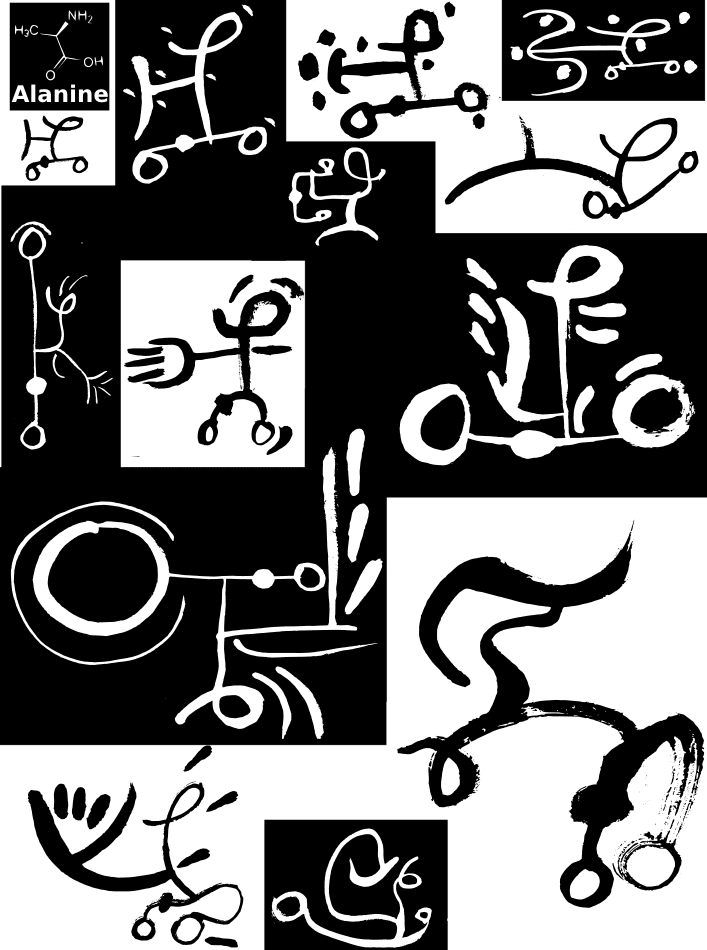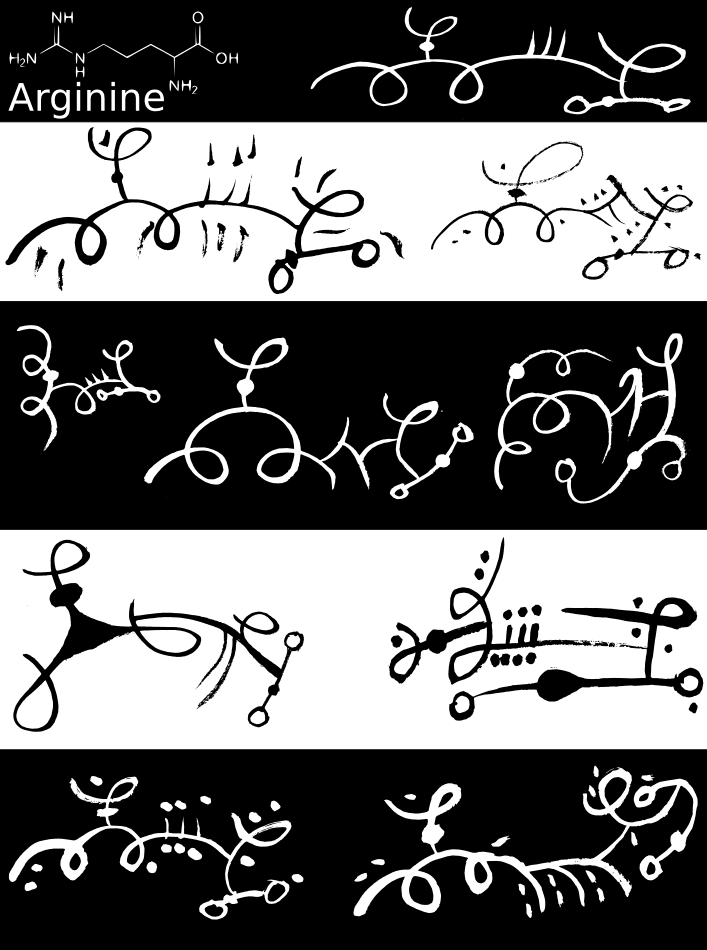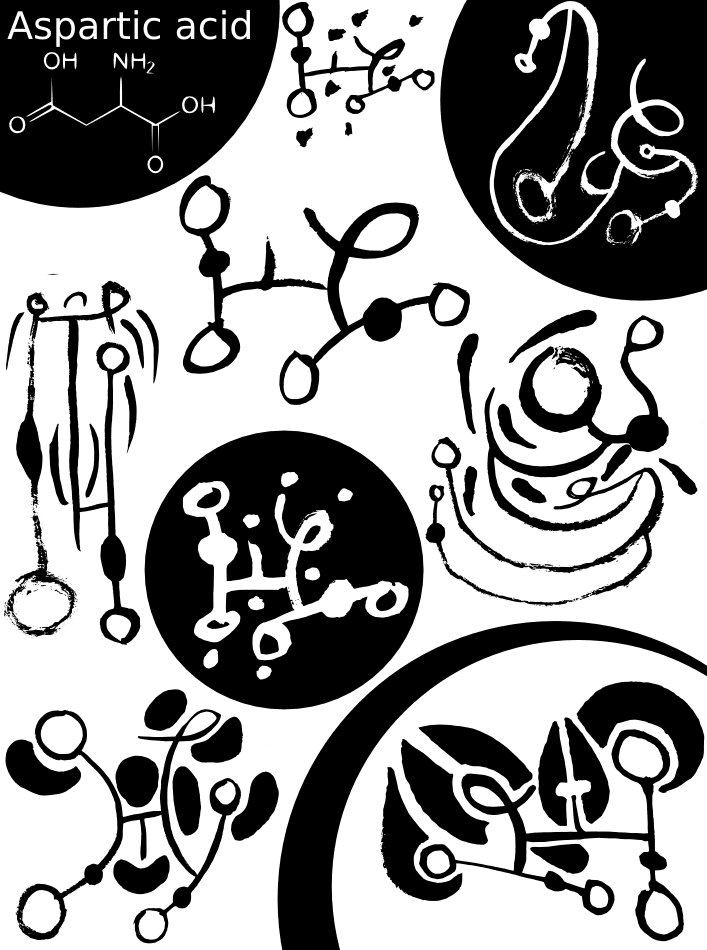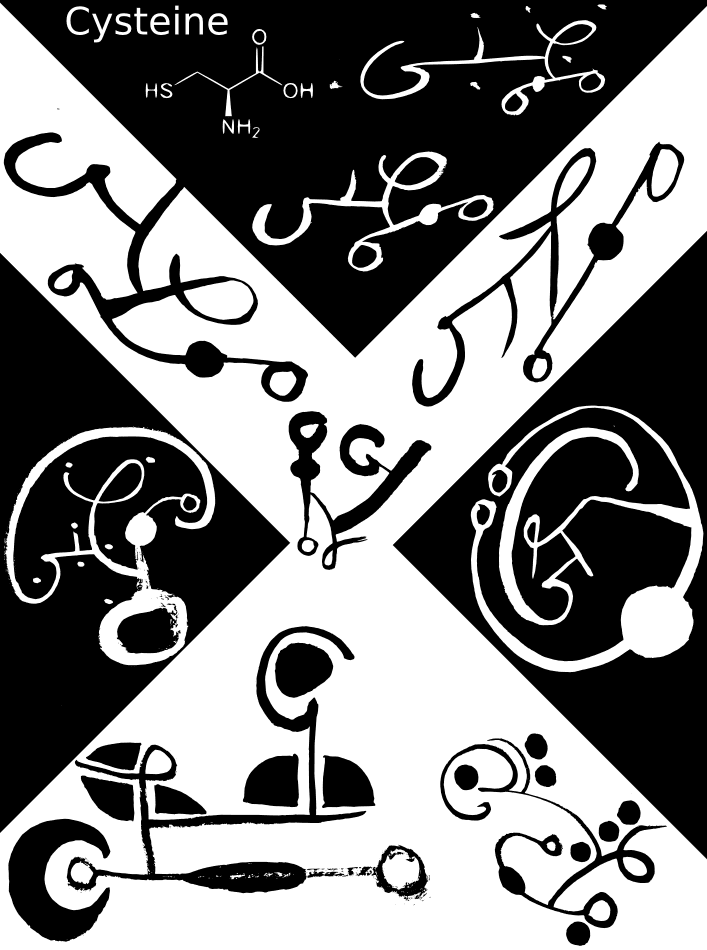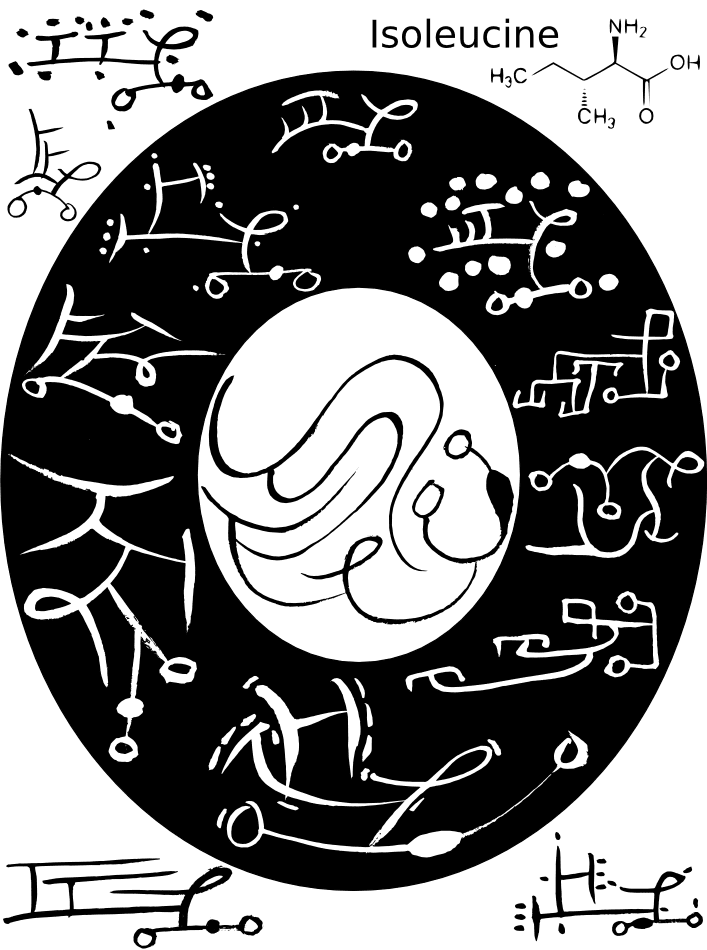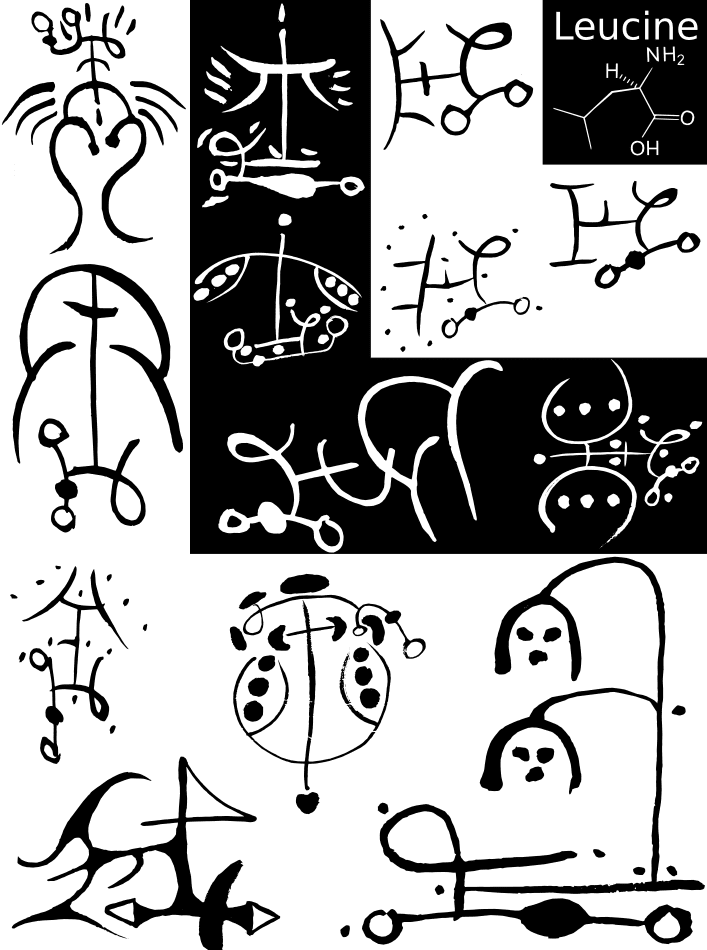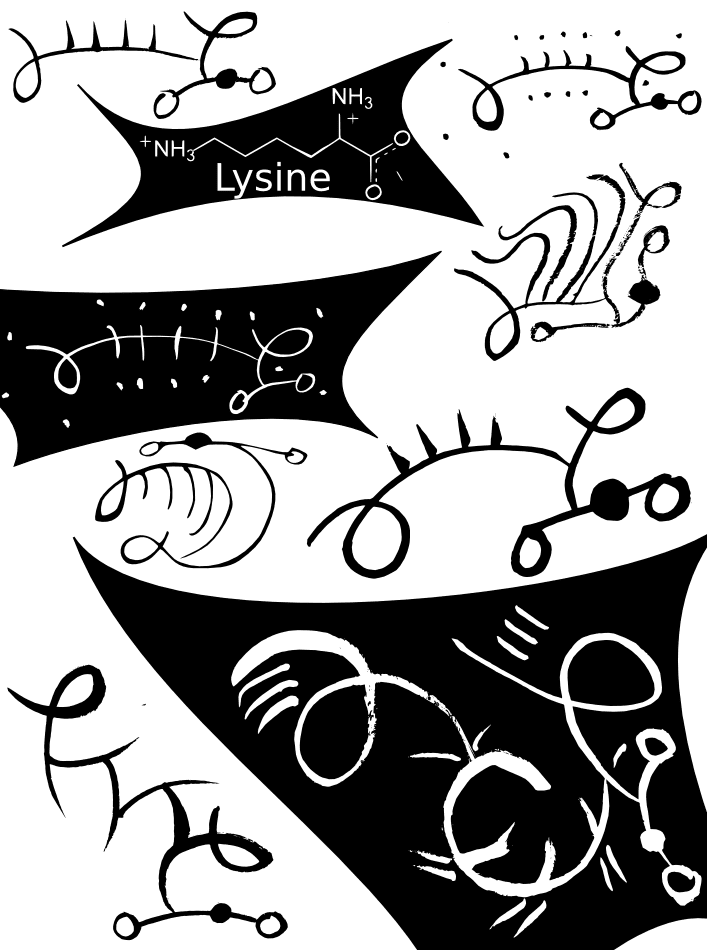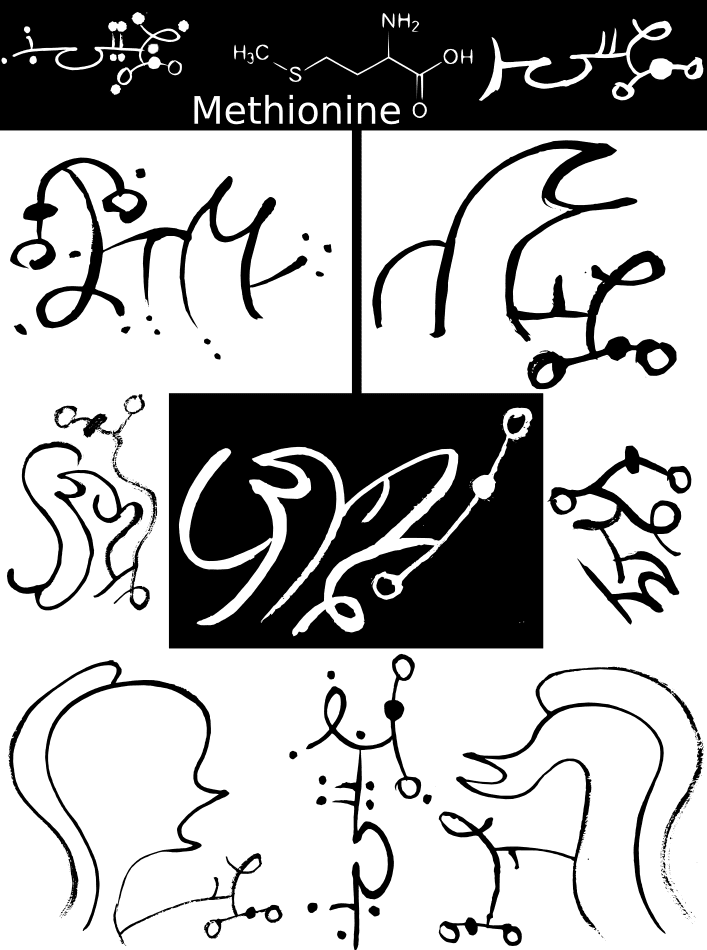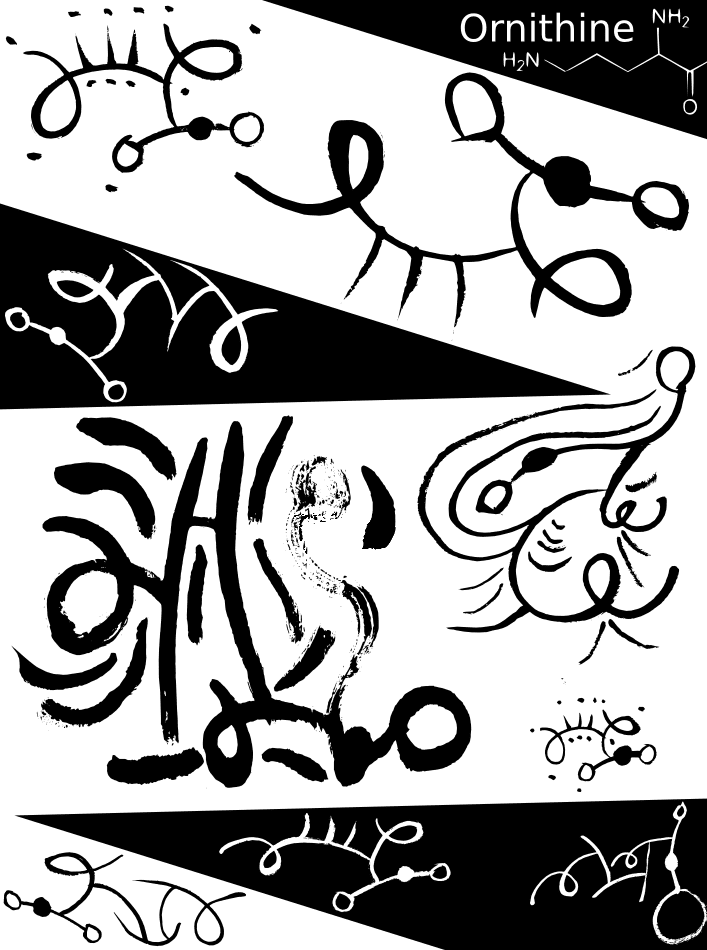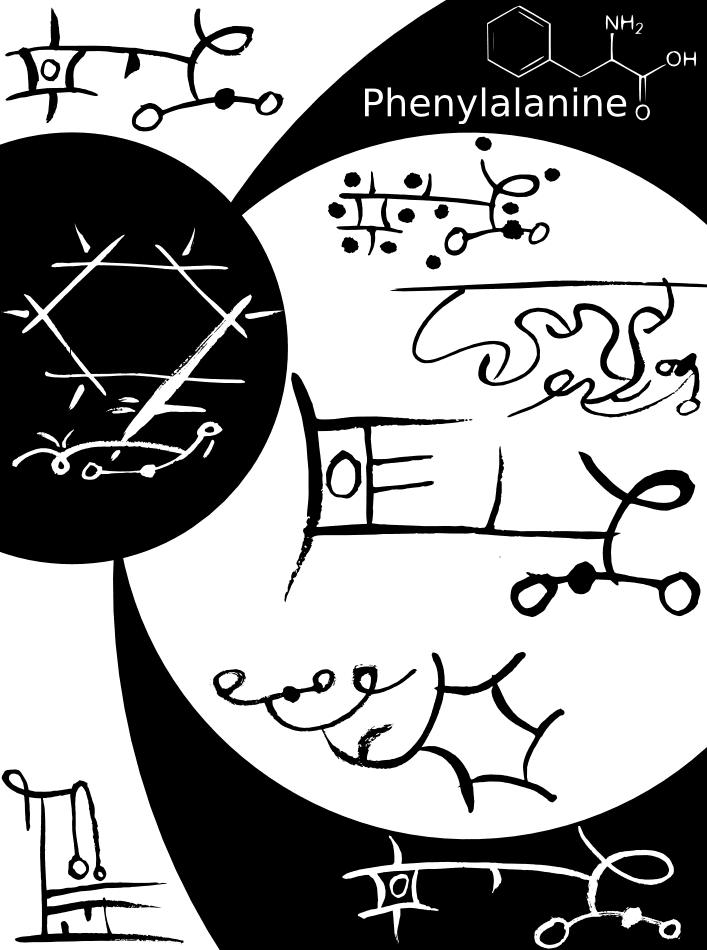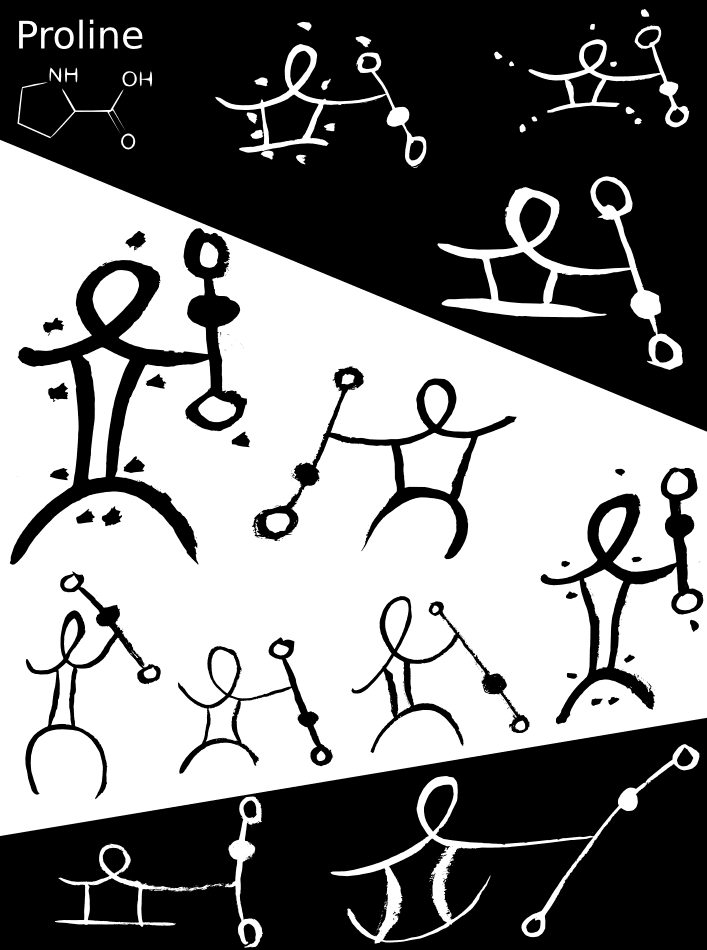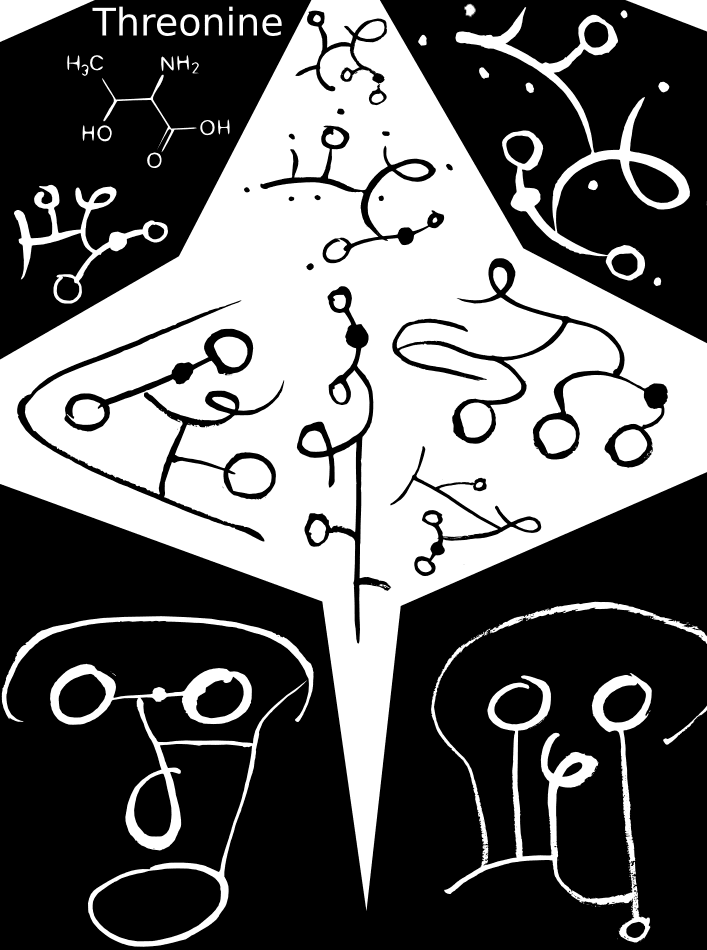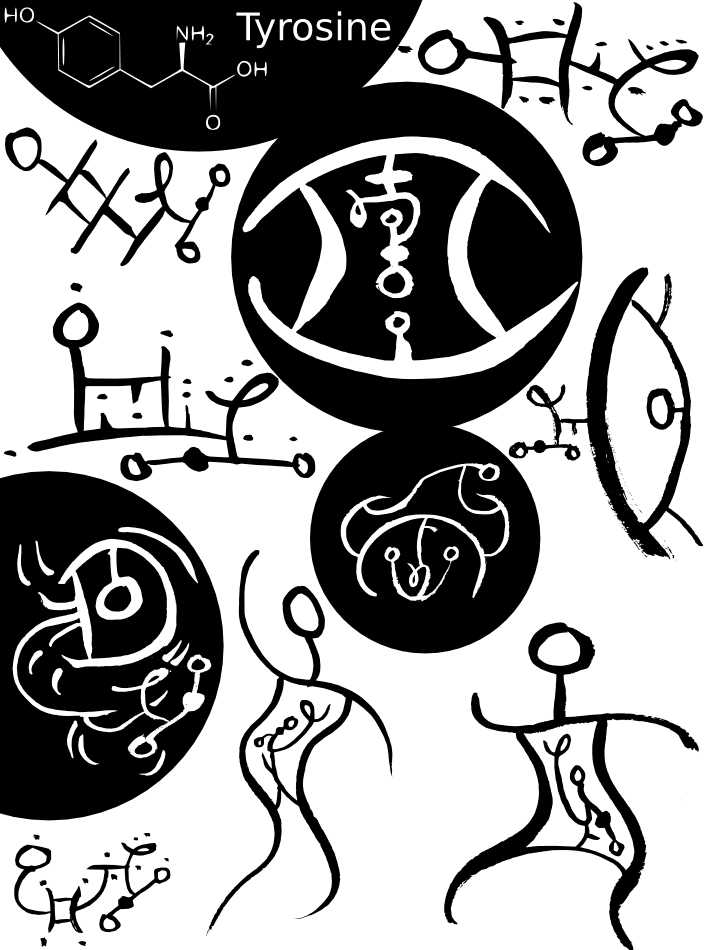Chemical Calligraphy
!
Auteur: Matthew M. DeBlock
!
Date MS: 08-26-2014
!
Date FL: dix-01-2014
!
Numéro FL: FL-000025-00
!
Citation: DeBlock, Matthew. 2014. “Chemical Calligraphy”
!
FL-000025-00, Fiat Lingua, !
2014.!
!
droits d'auteur: © 2014 Matthew DeBlock. Ce travail est sous licence
sous une attribution Creative Commons-
Non Commercial-Pas de Dérivés 3.0 Licence non transférée.
!
!
!
http://creativecommons.org/licenses/by-nc-nd/3.0/
!
Fiat Lingua est produit et maintenu par la Language Creation Society (LCS). Pour plus d'informations
à propos du LCS, visitez http://www.conlang.org/
Chemical Calligraphy v1.1
Now With Bonds and Hydrogens!
Chemical Calligraphy is a way of drawing organic compounds, this method is NOT meant to replace
standard notation, it is primarily meant as a mnemonic device and art form.
Chemical Calligraphy attempts to simplify the memorization of the large complex molecules and
structures in organic chemistry and make the learning process more fun and engaging.
For large complex molecules 2D, even standard notation, is not accurate. Visualization is best done
with computers and 3D rendering. Here we focus on the elements and their arrangement not
stereo-chemistry.
Chemical Calligraphy v1.0 is the base framework. It drops hydrogens, bond strength, et
stereo-chemistry. In v1.1 hydrogens and bond strength are added back in. They are both represented
with dots, and can be considered a “second layer” of chemical calligraphy.
For full details on v1.0 see http://dscript.org/chem.pdf
Bond strength and hydrogens are denoted by dots and dashes
Bond strength is “default 1”, adding dots in the line of the bond will increase the bond strength.
Hydrogens are dots(or dashes/single lines) floating around the structure.
On the following pages are the amino acids, drawn in various forms of Chemical Calligraphy.
While there is more than one way to
draw the amino acid group, I will stick
with this form. (on the right)
I like how it helps visually group
together the unit.
The Amino acids are shown in standard notation and in some basic forms first.
They are also shown in some playful artistic forms. In these forms the information about atoms and
which other atoms they bond with is all still present, even bond strength and hydrogens(when included)
The artistic forms distort the overall shape (not that 2D notation is accurate to begin with)
The simpler more “rigid” form of 90 degree angles and straight lines is best for mnemonic purposes.
The function of the artistic forms is
À)Art Form – An art form that encodes chemical structures (“bring science into art or vice-versa”)
b)Engagement – Even though creating such “ridiculous” structures might not have any direct relation
to the molecules, the simple act of choosing a structure and “playing with it” helps make study more
fun, qui, I find, makes study more enjoyable and efficient (because I am more creatively engaged)
One important note to keep in mind is that when you start curving the lines of carbon chains, c'est
possible that they might, under the right conditions, become ambiguous with a sulfur.
This is easily just “avoided”, just review the structure and check multiple carbon chains to see if it is
possible to “see a sulfur instead of 2 carbons”, le cas échéant, avoid that method.
There are various ways of resolving this, but I have not yet decided on a “rule”. I am leaning towards
“allow maximum flexibility for carbon, and restrict sulfur. Or just use sulfur in encapsulated form”.
Chemical calligraphy is an extension on the Dscript 2D alphabetical writing system,
More info on Dscript Alphabetical : http://dscript.o
r g/dscript.pdf
You may also like…
Cscript – Computer Human Bi-Friendly Writing System
http://dscript.ca/cscript.pdf
think of Cscript as “somewhere between QR codes and handwriting”
Nscript – Hammer & Nail Based Layered Writing System
org/nailscript.pdf
http://dscript.
Wscript – Wire Based 2D/3D Writing System
org
/ wirescript.pdf
http://dscript.
Chemical Calligraphy 1.0 : http://dscript.org/chem.pdf
even more fun….
“Mad Science”/”Technology Art” inventions and experiments. Great DIY fun.
http://dscript.org/inventions.pdf


